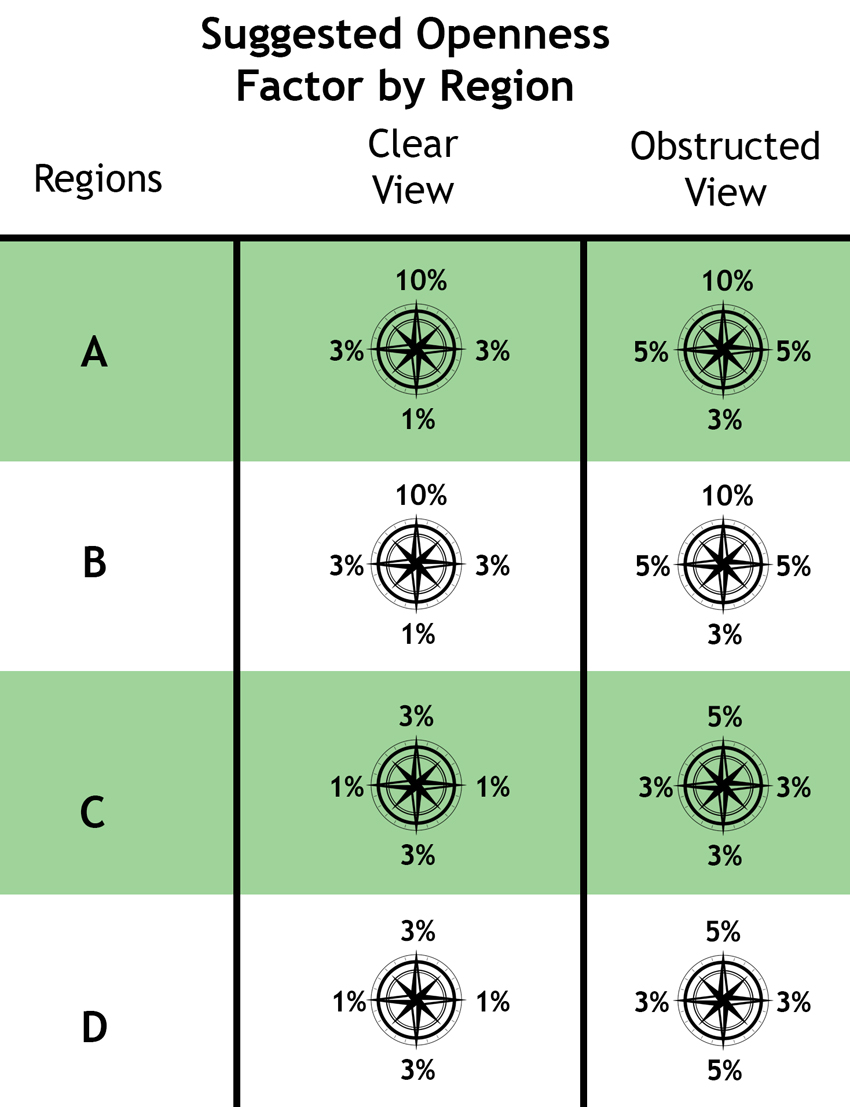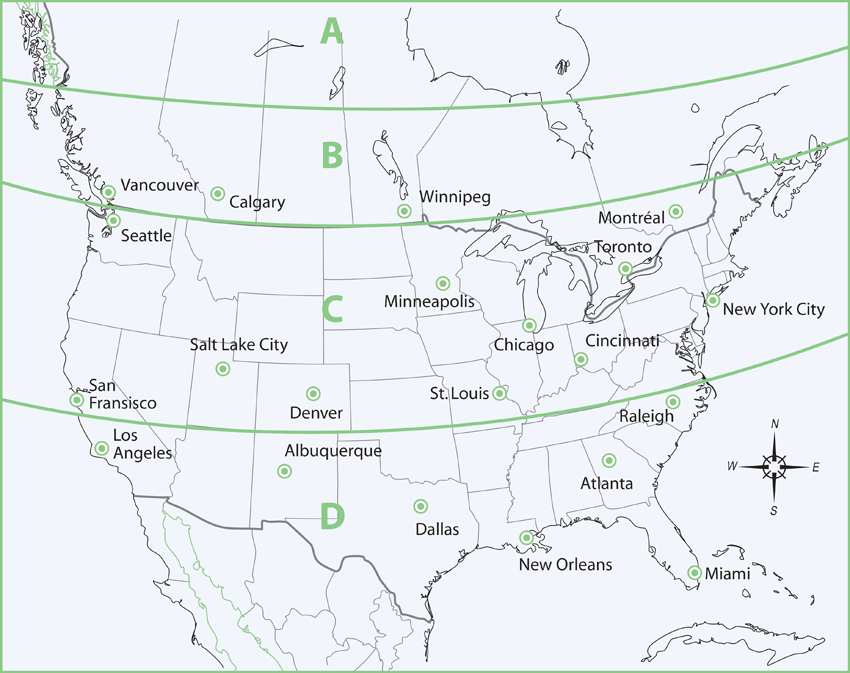Whole Building Approach to Interior Roller Shade Fabric Selections
Weave Types
With both fiberglass and polyester, designers can choose between different types of fabric weaves.
As the simplest weave pattern, the plain weave is created by passing each weft yarn over and under an alternating warp. This produces the same look on the front and back. Fashioned with a larger yarn, the rib weave creates a ribbed line effect in both the warp and weft directions.
With a basket weave, even numbers of the weft yarns cross over and under alternating yarns of the warp in a 1-to-1 ratio. This produces equally sized square openings and therefore offers the best view-through of any weave pattern, consequently making it the most popular pattern.
A twill weave is formed when weft yarns are threaded over one or more warp yarns and then passed under another two or more warp yarns. As each yarn row is offset from the previous, this produces a diagonal rib pattern. Also called a duplex fabric, the fabric is unique in that it offers identifiabley different colors and tones on each side.
Any weave pattern that does not fall into the category of plain or twill and results in a textured surface or pattern is called a fancy weave. Custom weaves and colors are available, though they typically require longer lead times and increased cost.
For example, a satin weave technique is where four or more weft yarns float over a warp yarn. Consequently, the warp lies under four or more weft yarns before interlacing over one weft yarn. The satin weave creates a dual-sided fabric where one side consists of more warp color and the other side shows more weft color. All satin weave fabrics have a predominantly white warp, which produces a predominantly white street-side view and enhanced solar protection.
At the same time, the interior can incorporate different interior room-side color schemes while maintaining exterior building uniformity with a white street-side appearance.
A mock leno weave is produced when three or more warp and/or weft yarns are grouped together so that adjacent groups of threads are separated during weaving. The threads in each group interlace with, or float over intersecting yarns independently, creating a textured weave pattern. The separation of grouped threads causes the overall fabric to have openings that allow for good view-through capabilities.

Photos courtesy of Draper Inc.
Openness factor impacts a shade’s view through, as well as performance in glare reduction and solar heat gain. Shown is the difference between 1 percent and 5 percent openness factors on the same color fabric.
View-Through
A number of key factors combine to determine the view-through of the roller shades. These include the weave, openness, color, and dominant lighting.
The openness factor is the percentage of space within the weave. The smaller the openness factor, the less light gets through, and the higher the openness factor, the better the view-through characteristics, as more light shines through. At the same time, a higher openness factor comes along with more solar radiation (i.e., heat gain, entering the room, and potentially glare).
For example, if preventing light pollution is a priority, then a 1 percent openness or an opaque fabric would be most appropriate.
Dual roller systems, where two shades are built into the same headbox, offer the best of both worlds, with a mesh fabric allowing view-through during the day and an opaque fabric providing privacy at night.
In selecting a color, the darker the fabric, the easier it is to see through, and the lighter the color, the lower the view-through and level of glare control. Darker colors offer superior view-through because they absorb more light. The human eye focuses on the first source of light it sees, so a darker color allows the eye to look through the fabric to the dominant light source outside. At the same time, light-colored fabrics offer a high level of daytime privacy and good natural ability to reflect solar energy.
“While the default might be to select a tighter weave where more sunlight or glare is anticipated, it is important to consider the combination of openness and color,” explains Susanne Gruening Angarano, ASID, CID, NCIDQ, principal and senior interior designer at Ashley McGraw Architects in Syracuse, N.Y. “For instance, a 1 percent open charcoal colored shade will allow for some visibility from the inside out while performing well for glare and daylight control. But a 1 percent open white-colored shade will block most visibility in addition to performing well for daylight control.”
With blackout shades, 100 percent of solar radiation is prevented from entering the space. While this is ideal for high levels of privacy, at times the shades can be inconvenient, as the only way to see out or allow daylight in is to raise the shade.
With darker colors, less solar radiation is reflected, so it can sometimes be difficult to find a happy medium between view-through and thermal comfort. Some duplex fabrics offer a light exterior and dark interior. There are also certain performance fabrics that help with this issue, and fabrics are available with a metalized backing to provide high reflective values on darker colors.
Offering some design insights here, Chris Coulter, associate and lighting designer at Buro Happold in New York, points out that lighter-color shades allow for more diffuse light transmission into a space, but tend to “glow” more under direct sun, which may reduce views out even in higher openness factor shades. “Lighter-color fabrics tend to be more neutral and align with a wider range of interior designs, whereas darker fabrics feel much more limited in their potential use. We often find ourselves recommending light- or medium-gray fabrics to offer a compromise between performance and aesthetics.”
Although openness factor and color are the major factors in view-through, the type of weave can also have an impact. A twill weave with contrasting colors on each side, for instance, provides excellent view-through because it provides a darker color on the inside and a lighter color on the outer side. A basket weave’s excellent view-through comes from its uniformly square openings of equal size.
With the assistance of an online simulator, architects can compare how different openness factors impact view-through. For example, the visuals produced by the simulator demonstrate the difference between a dark fabric with 1 percent openness and a 10 percent open fabric.
A final factor for view-through is dominant lighting. When people enter a space, their eyes are naturally drawn to the dominant light source. For instance, on a sunny day, the eye focuses on the light outside, not the dark fabric strands. In the same way, on a cloudy day or darker evening, we focus more on internal lighting, and our view through the fabric is not as clear. Architects should consider the major light source in the space and where is it coming from (e.g., from the sun or artificial lighting).
While openness and view-through are significant variables impacting specifications, shade performance is important as well, and this is impacted by a number of factors, including window size, geographical location, and building orientation. To assist with the latter, a Suggested Openness Factor by Region chart (shown above) gives examples of openness options that might work best based upon a bulding’s location and orientation. For example, in Chicago in Region C, a 3 percent open fabric is recommended for an obstructed view on the south elevation, whereas a building in Dallas in Region D would do better with a 5 percent open fabric for an obstructed view on the south elevation.

Image courtesy of Draper Inc.
This chart gives examples of openness options that might work best based upon location and orientation.

Image courtesy of Draper Inc.
Several things should be considered when choosing a fabric’s openness factor. A building’s geographic location, orientation, and surroundings may dictate that different openness factors be used on different facades of the same building.









